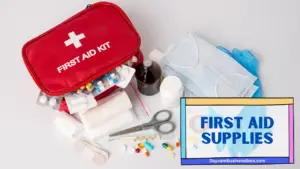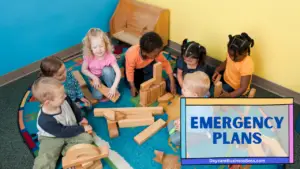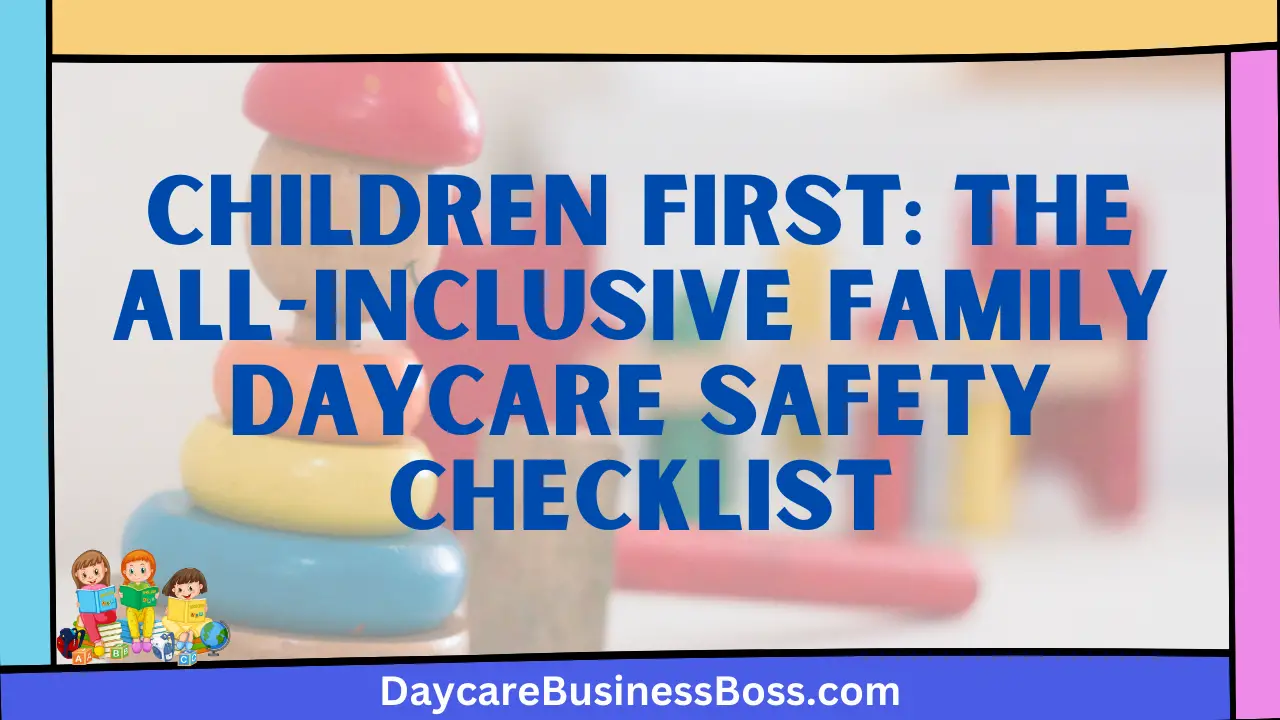When it comes to our children’s safety and well-being, creating a safe and secure atmosphere is non-negotiable. Family daycare environments provide a supportive environment for young children to study, play, and grow, but caregivers bear the responsibility of ensuring their safety. This is where the Family Daycare Safety Checklist comes in a thorough guide designed to strengthen the safety shield that surrounds children in these situations.
The most useful family daycare safety checklist includes home childproofing, secure play areas, first aid supplies, fire/CO alarms, proper hygiene, emergency plans, background checks, safe sleep practices, and updated contact information for parents.
In this article, we delve into the complexities of this crucial checklist, examining its key components and explaining why it is the foundation of responsible and trustworthy family childcare.
Home Childproofing
Home childproofing is the foundation of a safe daycare setting. This crucial first stage entails a set of safeguards to protect youngsters from potential hazards within the space. Caregivers must ensure that cupboards, drawers, and electrical outlets are appropriately locked to prevent any unintended access by curious hands. It is critical to keep sharp objects, dangerous substances, and choking risks out of a child’s reach to reduce the likelihood of mishaps.
Safety gates are an important line of defense, separating dangerous locations from play areas and keeping youngsters away from potentially dangerous regions. Equally vital is the stability of the furniture, which must be secured to prevent incidences of tipping or collapsing. Caregivers create an atmosphere in which children can freely explore and engage without fear of potential threats by diligently executing these childproofing measures. This proactive approach to house childproofing not only assures children’s physical safety but also gives parents peace of mind knowing their children are in a safe and caring environment.
Secure Play Areas
The strategic design of secure play areas within a daycare facility is critical to reducing accidents during playing. These carefully defined rooms are designed to provide a haven for children’s exploration and creativity while limiting potential threats. To do this, the play areas must be completely free of sharp edges, small objects, and potentially entangling wires that could endanger the children’s safety.
Adequate supervision is critical in fortifying the protective shell that surrounds youngsters during their playtime activities. Potential mishaps can be quickly avoided by assuring the presence of an attentive caregiver and promoting an environment of safety and reassurance. The use of age-appropriate toys demonstrates competent childcare. These toys not only engage and encourage children’s cognitive and physical development, but they also help to keep them safe.
It is critical to inspect play equipment regularly. This procedure protects against unplanned wear and tear that could result in an accident. Caregivers create an atmosphere in which children can play freely and joyfully, free of unnecessary dangers, by proactively recognizing and correcting any potential hazards. To summarize, the rigorous process of defining secure play zones demonstrates caregivers’ commitment to providing an environment in which children’s safety, development, and enjoyment are harmoniously integrated.
First Aid Supplies

A well-stocked first aid bag is an unwavering cornerstone of daycare safety, emphasizing the commitment to the well-being of the children in care. This pack, which has been precisely prepared and strategically placed, provides a quick and effective response to the unpredictability of small injuries that children may sustain. This kit contains vital components such as bandages, antiseptics, gauze, and other basic medical items that are ready to use when needed.
A first aid kit, on the other hand, is only as good as the person using it. Caregivers, as a result, play an important role in this equation. Basic first-aid training ensures that they not only have the required instruments but also the knowledge and confidence to treat small injuries quickly and effectively. This training enables caregivers to respond quickly, relieving pain and discomfort and preventing small occurrences from progressing into major problems.
Daycare facilities demonstrate their dedication to the safety and well-being of the children in their care by effortlessly combining a well-stocked first aid kit and competent caregivers with proper training. This symbiotic relationship between resources and knowledge exemplifies responsible parenting, in which preparedness and compassion come together to create an atmosphere in which children can thrive confidently, knowing that their safety is a top priority.
Read more about: Child-Focused Essentials: The Daycare Inventory Checklist Advantage
Fire/CO Alarms
The installation of smoke detectors and carbon monoxide alarms in childcare facilities demonstrates a fundamental commitment to the safety and well-being of both children and caregivers. These watchful sentinels serve as the first line of defense against potential threats, rapidly alerting everyone to the presence of smoke or the invisible menace of carbon monoxide. Their efficiency, however, is dependent on frequent maintenance.
Routine testing and battery replacement are required to guarantee that these critical devices continue to function properly. Caregivers ensure that the alarms are ready to respond quickly and efficiently in the case of an emergency, reducing the risk of damage.
An emergency preparedness plan includes more than just alarm functioning. Evacuation routes must be planned and well-known to all caregivers to respond quickly and efficiently in emergencies. Fire drills, conducted regularly, educate both children and caregivers about the evacuation process, leading to a sense of preparedness and calm in the event of an emergency.
The incorporation of smoke detectors, carbon monoxide alarms, and emergency drills into the fabric of a daycare facility underlines the facility’s dedication to safety. It provides caregivers with the tools and information they need to overcome unexpected problems, fostering an environment in which both children and adults can grow while knowing their safety is protected through proactive measures.
Proper Hygiene
Maintaining perfect hygiene standards in a childcare setting is a critical step in reducing the risk of infections and diseases. Cleanliness is carefully orchestrated to protect the health and well-being of both children and caregivers. The strict practice of regular handwashing is a cornerstone of this method. This simple yet effective act acts as a main protection against germ spread, reducing the risk of illnesses taking root inside the close-knit society.
The upkeep of sanitary diaper-changing spaces is critical. Sanitation measures that are strict not only avoid potential contamination but also ensure the comfort and dignity of the children in care. Caregivers create an environment where hygiene and well-being are harmoniously integrated by rigorously adhering to these criteria.
Separation of children’s items is also crucial. The risk of cross-contamination is considerably decreased by marking and storing their possessions separately. This method guarantees that each child’s belongings stay with them, reducing the spread of germs and potential allergens.
Emergency Plans

Emergency preparedness is a cornerstone of effective daycare administration. The assurance of safety extends beyond daily routines, necessitating a precisely constructed emergency plan that addresses a wide range of probable eventualities. Daycare providers are responsible for the well-being of the children entrusted to their care, and a detailed emergency plan is an essential tool in carrying out this job.
This plan should include a wide range of scenarios, from natural disasters such as earthquakes or extreme weather events to medical issues that may come suddenly. It should also account for lockdown circumstances, laying out a clear plan of action in the face of threats that necessitate immediate defensive measures.
A plan on paper, however, is only as good as its execution. It is critical to communicate the plan clearly to both workers and youngsters. Everyone engaged should be knowledgeable about their duties and responsibilities to respond cohesively in high-stress situations. Periodic emergency drills should be held to reinforce preparation. These drills familiarize both the children and the staff with the procedures that must be taken in the event of an emergency, shifting the plan from theory to practical response.
Read more about: Little Spaces, Big Possibilities: Unveiling Small Daycare Floor Plans
Background Checks
The crucial importance of child safety in a daycare setting needs severe safeguards, with full background checks for all caregivers emerging as a key component of this commitment. This practice exemplifies an unwavering commitment to the well-being and security of the children in these providers’ care.
These background checks dive into crucial parts of a caregiver’s history, going beyond the surface. Screening for criminal records is an important step in ensuring that individuals with a history of misbehavior or who pose a risk are found and removed from positions of responsibility. Examining a caregiver’s previous career history, on the other hand, provides insights into their experience, work ethics, and performance, which might be indicative of their fitness for the task.
References are essential for adding an extra degree of validation. Those who have worked closely with the caregiver can provide vital insight into their character, dependability, and interpersonal skills. These recommendations add to a more complete picture of the individual, allowing for more informed judgments about their fitness for the post.
Safe Sleep Practices
Prioritizing the safety of newborns and small children while they sleep is an essential responsibility for caretakers. This imperative emphasizes the dedication to providing a safe and caring environment in which children can sleep peacefully. The establishment of a safe sleeping environment that adheres to recognized norms is critical to attaining this.
The selection of cribs that satisfy high safety regulations is important to this attempt. These cribs are designed to reduce potential risks, ensuring that infants are safe while sleeping. To reduce the risk of asphyxia or entanglement, cribs should be free of soft items, such as cushions, blankets, and stuffed animals.
It is also critical to strategically situate the crib in a peaceful, well-ventilated environment. This setting not only encourages uninterrupted sleep but also aids in the regulation of the child’s body temperature. The absence of overwhelming stimuli allows infants to sleep soundly, improving their overall well-being.
The critical practice of sleeping babies on their backs is an overarching theme in safe sleep habits. This position minimizes the incidence of SIDS by enabling unimpeded airflow and minimizing potential breathing issues.
Updated Contact Information for Parents

In the field of childcare, having up-to-date contact information for parents or guardians is an invaluable asset, especially in the event of an emergency. This practice is based on the understanding that efficient communication is critical to safeguarding the safety and well-being of children in the care of providers.
Caregivers build a key lifeline in the event of an emergency by keeping accurate and up-to-date contact information. A constant means of reaching parents or guardians serves as a conduit for crucial information to be quickly transmitted. This ability to communicate in real-time becomes even more important when faced with unforeseen circumstances that necessitate quick parental participation.
Aside from its functional utility, maintaining up-to-date contact information carries emotional significance. Communication between caregivers and parents regularly promotes a sense of collaboration and trust. Parents may be certain that they can be reached quickly, and carers can be confident that they can perform their duties properly.
Read more about: Daycare Questionnaire for Parents and Why You Need It
Frequently Asked Questions

What is the significance of home childproofing in a family childcare setting?
To reduce accidents and injuries in a family daycare situation, home childproofing is essential. Children are naturally inquisitive and can quickly come into contact with possible hazards such as sharp objects, toxic substances, and choking hazards. Childproofing methods, such as fastening cupboards, electrical outlets, and furniture, contribute to the creation of a safe environment in which children can explore and play without taking unnecessary risks.
What steps may caregivers take to guarantee healthy sleep practices in a family daycare?
To lower the incidence of Sudden Infant Death Syndrome (SIDS) and other sleep-related accidents, safe sleeping practices are crucial. Caregivers should make certain that cribs exceed safety regulations, are free of soft bedding, and are positioned in a quiet, well-ventilated environment. To ensure optimal safety, infants should always sleep on their backs, and the sleep environment should be supervised.
What are the benefits of background checks for family daycare providers?
Background checks are an important step in guaranteeing children’s safety and security in a family daycare situation. By searching for criminal records, previous employment history, and references, thorough background checks can detect any potential dangers. This procedure aims to keep persons with a history of misbehavior or injury away from children, resulting in a more secure environment for both children and their families.
To learn more on how to start your own daycare checkout my startup documents here.
The information provided by DaycareBusinessBoss.com (“The Site”) is for general informational purposes only. All information on the Site is provided in good faith, however, we make no representation or warranty of any kind, express or implied, regarding the accuracy, adequacy, validity, reliability, availability or completeness of any information on the Site. Under no circumstance shall we have any liability to you for any loss or damage of any kind incurred as a result of the use of the Site or Reliance on any information provided on the Site. Your use of the Site and your reliance on any information on the Site is solely at your own risk.
This blog post is for educational purposes only and does not constitute legal advice. Please consult a legal expert to address your specific needs. Terms and Conditions. (https://daycarebusinessboss.com/terms-conditions/)

Meet Shawn Chun: Entrepreneur and Childcare Business Fan.
I’m a happy individual who happens to be an entrepreneur. I have owned several types of businesses in my life from a coffee shop to an import and export business to an online review business plus a few more and now I create online daycare business resources for those interested in starting new ventures. It’s demanding work but I love it. I do it for those passionate about their business and their goals. That’s why when I meet a childcare business owner, I see myself. I know how hard the struggle is to retain clients, find good employees and keep the business growing all while trying to stay competitive.
That’s why I created Daycare Business Boss: I want to help childcare business owners like you build a thriving business that brings you endless joy and supports your ideal lifestyle.


